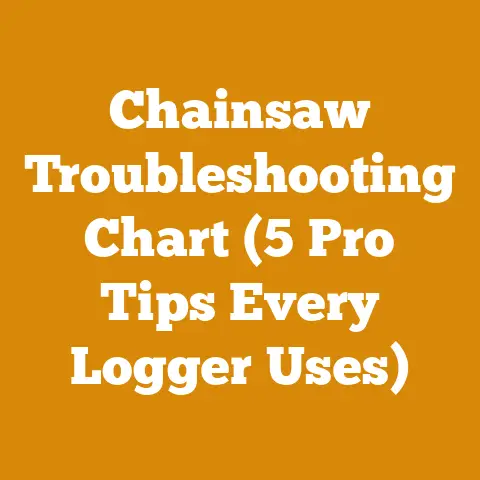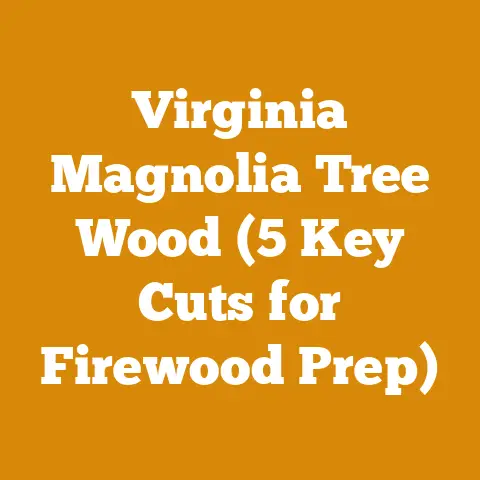Tomato Plant Fence Solutions (3 Pro Woodworking Tips)
Tomato Plant Fence Solutions (3 Pro Woodworking Tips)
I’m always looking for ways to be more eco-conscious in my garden. That’s why I started exploring woodworking solutions for my tomato plants. It’s a journey that’s led me down some interesting paths, and I’m excited to share what I’ve learned with you. Let’s dive into how you can build sturdy, attractive, and cost-effective tomato plant fences using woodworking techniques, all while keeping sustainability in mind.
Why Wood for Tomato Plant Fences?
Using wood for tomato plant fences offers several advantages over other materials like metal or plastic. Wood is a renewable resource, especially when sourced responsibly. It adds a natural aesthetic to your garden, blending seamlessly with the environment. Moreover, wood provides excellent structural support for heavy tomato plants, particularly indeterminate varieties that can grow quite tall and laden with fruit.
The Allure of Natural Materials
There’s something inherently satisfying about working with wood. The smell, the texture, the feeling of creating something tangible – it’s a connection to nature that’s hard to replicate.
Pro Woodworking Tip #1: The Simple Wooden Stake Fence
This is the most basic and budget-friendly option. It involves driving wooden stakes into the ground around your tomato plants and then connecting them with twine or wire. While simple, it can be surprisingly effective.
Material Selection: Choosing the Right Wood
- Cedar: Naturally rot-resistant, making it ideal for outdoor use. Expect to pay around $3-$5 per stake (4-6 feet long), depending on the diameter.
- Pressure-Treated Pine: A more affordable option, typically costing $2-$4 per stake. However, ensure it’s treated with a garden-safe preservative.
- Reclaimed Wood: An eco-friendly choice! Check local salvage yards or online marketplaces. Prices can vary widely, but often you can find materials for free or at a significant discount.
Personal Story: I once salvaged a bunch of old cedar fence posts from a neighbor who was replacing his fence. With a little cleaning and some minor repairs, I had enough material to build tomato cages for my entire garden – completely free!
Labor Costs: DIY vs. Hiring Help
If you’re doing it yourself (DIY), the labor cost is essentially your time. Let’s say it takes you 2 hours to install a stake fence for 10 tomato plants. If you value your time at $20/hour, that’s $40 in labor. However, if you were to hire a handyman, expect to pay between $50-$100 for the same task, depending on your location and the handyman’s rates.
Data Point: According to HomeAdvisor, the average hourly rate for a handyman in the US is between $55 and $75.
Tool Costs: Essential Tools for the Job
- Hammer or Mallet: Essential for driving stakes into the ground. Costs range from $10-$30.
- Twine or Wire: For connecting the stakes. A roll of garden twine typically costs $5-$10.
- Measuring Tape: To ensure even spacing. A basic tape measure is around $10-$20.
- Optional: Post Driver: Makes driving stakes easier, especially in hard soil. Rental fees are around $15-$25 per day.
Cost Breakdown Example (10 Tomato Plants):
- Stakes (Cedar): $4/stake x 10 stakes = $40
- Twine: $7
- Hammer (if you don’t already have one): $20
- Total: $67
Cost Optimization Tip: To reduce costs, consider using thinner stakes or spacing them further apart. However, be mindful of the support your tomato plants will need as they grow.
Calculating Wood Volume: A Quick Lesson
While stake fences don’t require precise wood volume calculations, it’s helpful to understand the basics for future woodworking projects. Wood volume is typically measured in board feet. A board foot is a unit of volume equal to a piece of wood 1 inch thick, 12 inches wide, and 12 inches long. The formula is:
(Thickness in inches x Width in inches x Length in inches) / 144 = Board Feet
Understanding this simple formula can help you estimate material costs for larger woodworking projects.
Pro Woodworking Tip #2: The Woven Wood Panel Fence
This option involves creating small, rectangular panels using thin strips of wood woven together. These panels are then attached to posts to form a fence. It’s more labor-intensive than the stake fence but offers a more aesthetically pleasing and sturdy solution.
Material Selection: Balancing Cost and Durability
- Pine: A budget-friendly option for the woven strips. Expect to pay around $1-$2 per strip (1 inch x 2 inches x 4 feet).
- Cedar Posts: For the main support. As mentioned earlier, these cost around $3-$5 per stake (4-6 feet long).
- Exterior Wood Screws or Nails: To fasten the strips to the posts. A box of screws or nails typically costs $10-$20.
Unique Insight: I’ve found that using different wood species for the strips and posts can create a visually interesting effect. For example, using darker cedar posts with lighter pine strips can add depth and character to your fence.
Labor Costs: The Time Investment
Building woven wood panel fences is more time-consuming than stake fences. Expect to spend 4-6 hours building a fence for 10 tomato plants. If you value your time at $20/hour, that’s $80-$120 in labor. Hiring a carpenter for this project could cost between $200-$400, depending on their rates and the complexity of the design.
Data Point: According to Thumbtack, the average cost to hire a carpenter in the US is between $50 and $100 per hour.
Tool Costs: Expanding Your Woodworking Arsenal
In addition to the tools required for the stake fence, you’ll need a few more for this project:
- Saw: To cut the wood strips to size. A hand saw is sufficient, but a power saw (circular saw or miter saw) will make the job faster and easier. Hand saws cost $20-$50, while power saws range from $50-$200.
- Drill: To pre-drill holes for the screws or nails. A basic cordless drill costs $50-$100.
- Clamps: To hold the strips in place while you fasten them. A set of clamps costs $20-$40.
Cost Breakdown Example (10 Tomato Plants):
- Pine Strips: $2/strip x 40 strips = $80
- Cedar Posts: $4/post x 4 posts = $16
- Screws: $15
- Saw (if you don’t already have one): $75
- Drill (if you don’t already have one): $75
- Total: $261
Cost Optimization Tip: To save money on materials, consider using thinner strips of wood or spacing them further apart. You can also reduce labor costs by simplifying the design of the panels.
Wood Drying: A Crucial Step
If you’re using freshly cut wood, it’s essential to let it dry before building your fence. This will prevent warping and cracking. The drying time depends on the wood species, thickness, and climate. As a general rule, allow at least one month of drying time per inch of thickness.
Formula for Estimating Drying Time:
Drying Time (months) ≈ Thickness (inches)
This is a rough estimate, and you should monitor the moisture content of the wood using a moisture meter to ensure it’s adequately dried.
Pro Woodworking Tip #3: The A-Frame Tomato Support
This design involves building two A-shaped frames and connecting them with a horizontal bar. Tomato plants are then trained to grow up the sides of the A-frames. It’s a sturdy and attractive option, particularly well-suited for indeterminate tomato varieties.
Material Selection: Strength and Stability
- 2×4 Lumber: For the A-frame supports and horizontal bar. Expect to pay around $5-$8 per 8-foot length.
- Exterior Wood Screws: To assemble the frames. A box of screws typically costs $10-$20.
- Chicken Wire or Trellis Netting: To provide support for the tomato plants. A roll of chicken wire or netting costs $20-$40.
Personal Experience: I built an A-frame support for my heirloom tomatoes last year, and it worked wonders. The plants grew vigorously, and the A-frame provided excellent support, even when the plants were laden with fruit.
Labor Costs: Precision and Assembly
Building A-frame tomato supports requires more precision and careful assembly than the previous options. Expect to spend 6-8 hours building a support for 10 tomato plants. If you value your time at $20/hour, that’s $120-$160 in labor. Hiring a carpenter for this project could cost between $300-$500, depending on their rates and the complexity of the design.
Data Point: According to Angi, the average cost to build a fence in the US is between $2,700 and $7,000. While this is for a larger fence, it gives you an idea of the potential cost of hiring a professional for a more complex woodworking project.
Tool Costs: Precision Cuts and Secure Fastening
In addition to the tools required for the woven wood panel fence, you’ll need a few more specialized tools for this project:
- Miter Saw: To make precise angle cuts for the A-frame supports. A miter saw costs $100-$300.
- Level: To ensure the A-frames are level. A level costs $10-$20.
- Staple Gun: To attach the chicken wire or netting to the A-frames. A staple gun costs $20-$40.
Cost Breakdown Example (10 Tomato Plants):
- 2×4 Lumber: $7/length x 6 lengths = $42
- Screws: $15
- Chicken Wire: $30
- Miter Saw (if you don’t already have one): $150
- Staple Gun (if you don’t already have one): $30
- Total: $267
Cost Optimization Tip: To reduce costs, consider using smaller lumber dimensions or simplifying the design of the A-frame. You can also use recycled materials, such as old pallets, to build the frames.
Wood Preservatives: Protecting Your Investment
To extend the life of your wooden tomato plant fence, it’s important to apply a wood preservative. There are many different types of preservatives available, including:
- Oil-Based Preservatives: Provide excellent protection against moisture and rot. However, they can be harmful to plants and the environment.
- Water-Based Preservatives: A more eco-friendly option. They are less toxic than oil-based preservatives but may not provide as much protection against moisture.
- Natural Preservatives: Such as linseed oil or beeswax. These are the most eco-friendly option but may require more frequent application.
Important Note: Always follow the manufacturer’s instructions when applying wood preservatives.
Global Timber Prices and Market Rates: A Quick Overview
Understanding global timber prices can help you make informed decisions about material selection for your tomato plant fences. Timber prices vary widely depending on the species, quality, and location.
Data Point: According to the Forest Products Review, global softwood lumber prices have been fluctuating due to factors such as supply chain disruptions, increased demand for housing, and trade policies.
Regional Variations:
- North America: Lumber prices are generally higher than in other regions due to high demand and limited supply.
- Europe: Timber prices are relatively stable due to sustainable forestry practices and a well-established supply chain.
- Asia: Timber prices vary widely depending on the country. Some countries have abundant timber resources, while others rely on imports.
Fuelwood Market Rates:
While tomato plant fences don’t directly involve fuelwood, understanding fuelwood market rates can provide insights into the overall value of wood as a resource. Fuelwood prices vary depending on the species, quality, and location.
Data Point: According to the US Energy Information Administration, the average price of residential firewood in the US is around $250-$400 per cord.
Budgeting and Cost Management: Key Considerations
When planning your tomato plant fence project, it’s important to consider all the costs involved, including:
- Materials: Wood, screws, nails, chicken wire, etc.
- Labor: Your time or the cost of hiring a professional.
- Tools: Saws, drills, hammers, etc.
- Permits: In some cases, you may need a permit to build a fence.
- Transportation: The cost of transporting materials to your home.
- Contingency: It’s always a good idea to add a contingency to your budget to cover unexpected expenses.
Practical Tips for Cost Optimization:
- Shop around for materials: Compare prices from different suppliers.
- Use recycled materials: Consider using old pallets or reclaimed wood.
- Simplify the design: The more complex the design, the more it will cost.
- Do it yourself: If you have the skills and time, doing the work yourself can save you a lot of money.
- Plan ahead: Careful planning can help you avoid costly mistakes.
Challenges Faced by Small-Scale Loggers and Firewood Suppliers
Small-scale loggers and firewood suppliers often face challenges such as:
- Limited access to markets: It can be difficult for small-scale operators to compete with larger companies.
- High transportation costs: Transporting logs and firewood can be expensive, especially in rural areas.
- Fluctuating prices: Timber and fuelwood prices can fluctuate significantly, making it difficult to plan for the future.
- Environmental regulations: Complying with environmental regulations can be costly and time-consuming.
Supporting local loggers and firewood suppliers can help ensure the sustainable management of forests and provide economic opportunities for rural communities.
Actionable Takeaways and Next Steps
Building your own tomato plant fence is a rewarding project that can save you money, improve the aesthetics of your garden, and provide excellent support for your tomato plants. Here are some actionable takeaways:
- Choose the right design: Consider your budget, skills, and the needs of your tomato plants.
- Select sustainable materials: Opt for responsibly sourced wood or recycled materials.
- Plan your budget carefully: Consider all the costs involved and look for ways to save money.
- Take your time: Building a fence is a project that should be done carefully and thoughtfully.
- Enjoy the process: Woodworking can be a relaxing and rewarding hobby.
Next Steps:
- Research different fence designs: Explore different options and choose the one that best suits your needs.
- Create a budget: Estimate the cost of materials, labor, and tools.
- Gather your materials: Shop around for the best prices and consider using recycled materials.
- Start building: Follow the instructions carefully and take your time.
- Enjoy your new tomato plant fence!
By following these tips, you can build a sturdy, attractive, and cost-effective tomato plant fence that will help you grow healthy and delicious tomatoes for years to come. Remember, “a penny saved is a penny earned,” and a well-built fence is an investment in your garden’s future. So, grab your tools, put on your thinking cap, and get ready to create something amazing!






